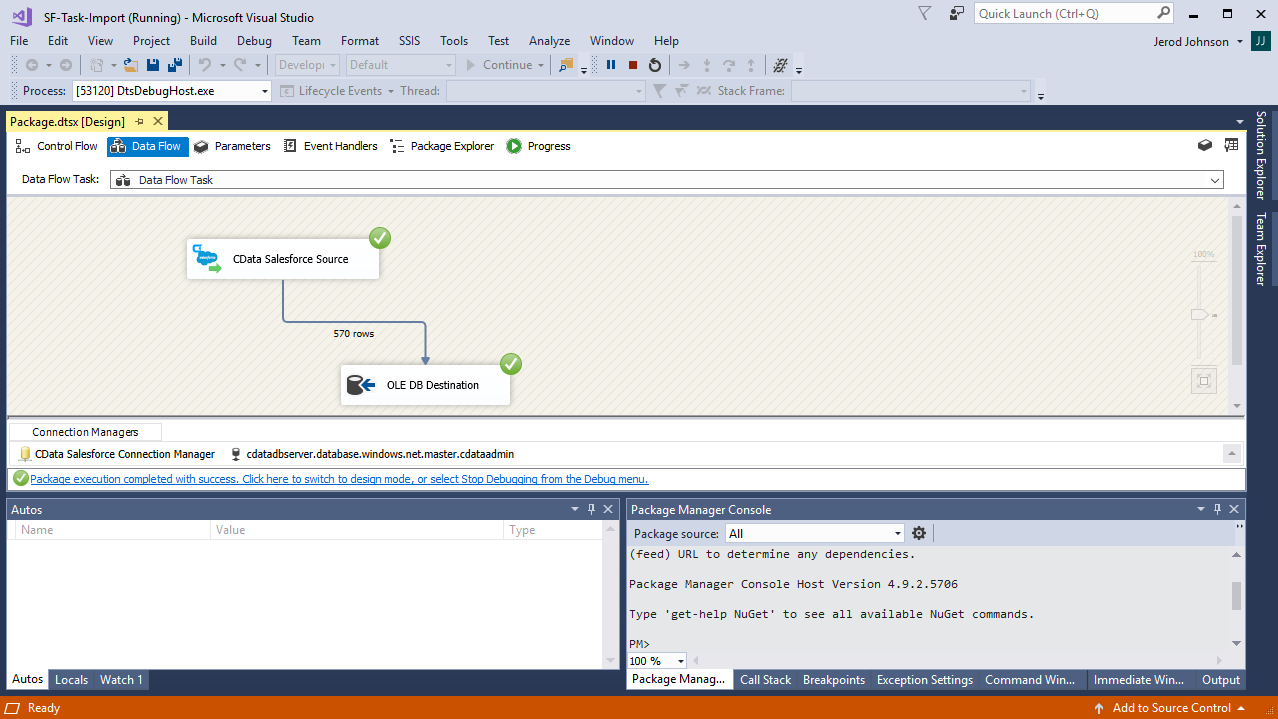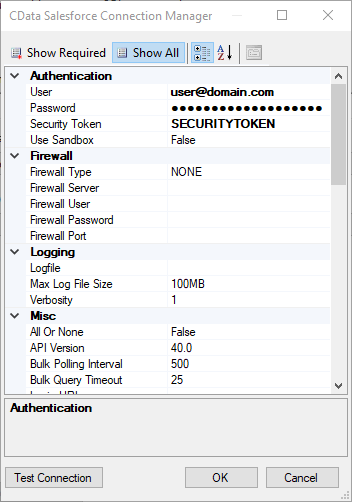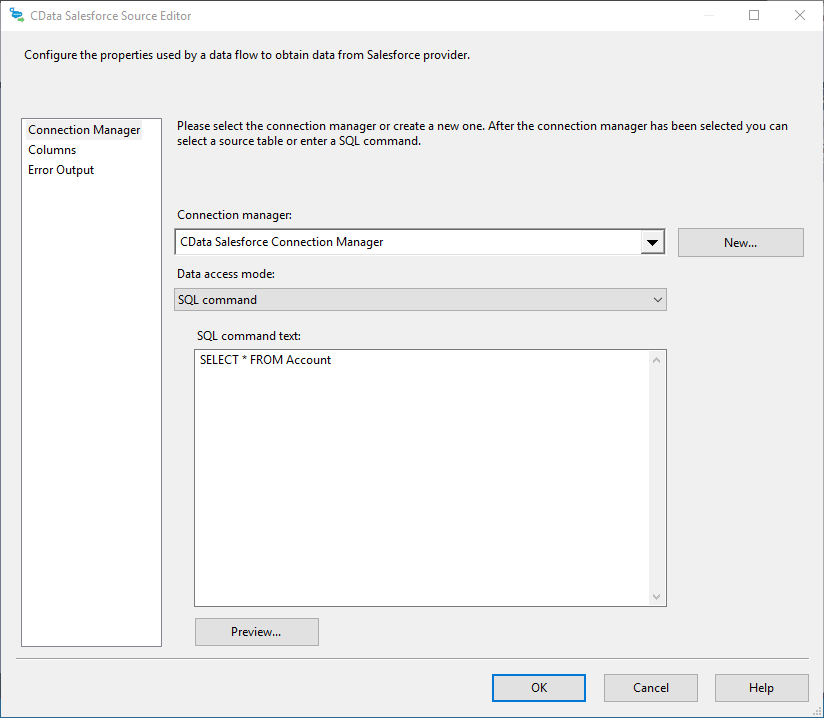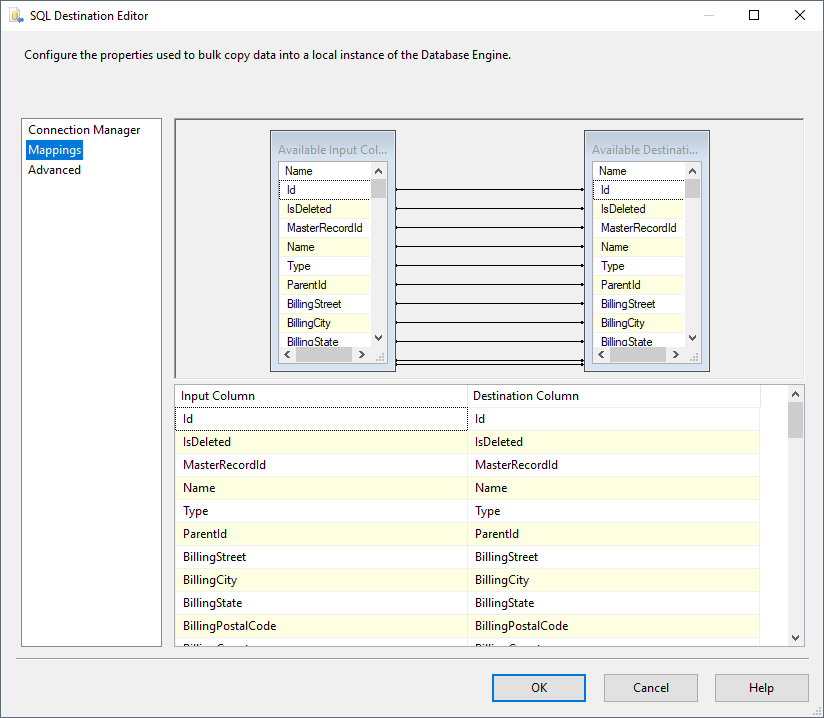Discover how a bimodal integration strategy can address the major data management challenges facing your organization today.
Get the Report →How to Import Snowflake Data into SQL Server using SSIS
Easily back up Snowflake data to SQL Server using the SSIS components for Snowflake.
Using SQL Server as a backup for critical business data provides an essential safety net against loss. Backing up data to SQL Server enables business users to more easily connect that data with features like reporting, analytics, and more.
This example demonstrates how to use the CData SSIS Tasks for Snowflake inside of a SQL Server SSIS workflow to transfer Snowflake data into a Microsoft SQL Server database.
Add the Components
To get started, add a new Snowflake source and SQL Server ADO.NET destination to a new data flow task.
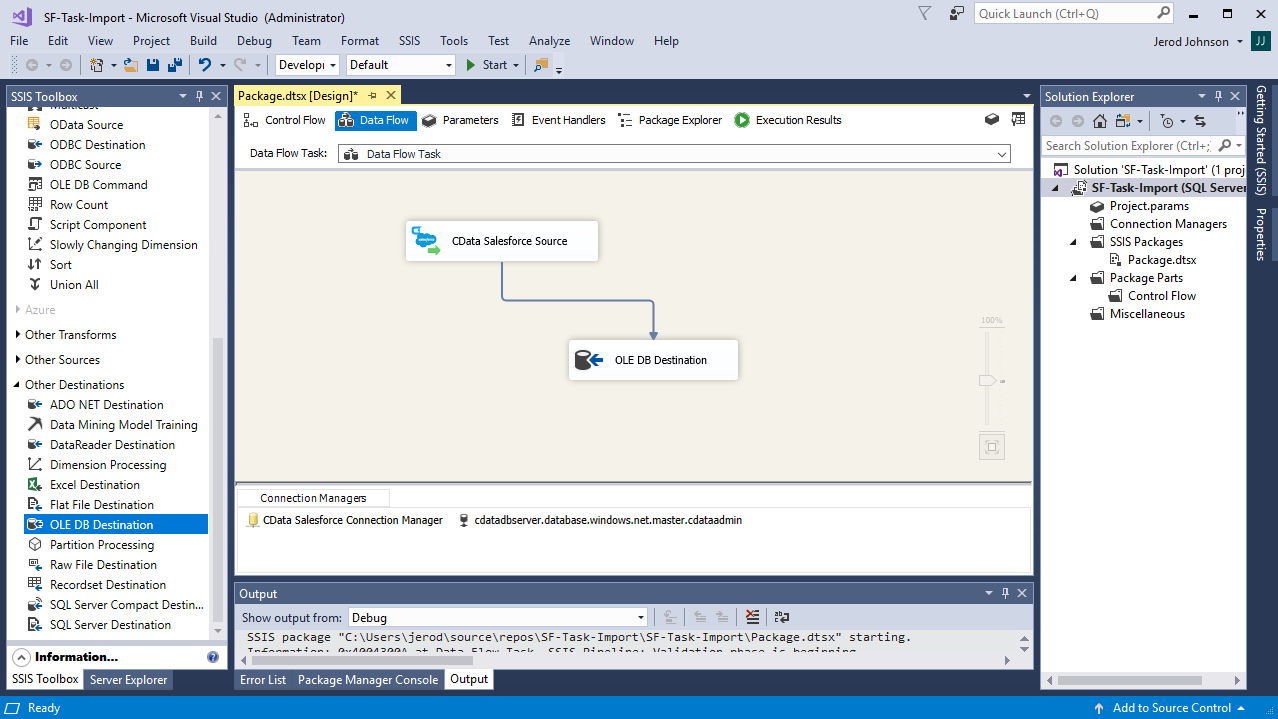
Create a New Connection Manager
Follow the steps below to save Snowflake connection properties in a connection manager.
- In the Connection Manager window, right-click and then click New Connection. The Add SSIS Connection Manager dialog is displayed.
- In the Connection Manager type menu, select Snowflake. The CData Snowflake Connection Manager is displayed.
- Configure connection properties.
To connect to Snowflake:
- Set User and Password to your Snowflake credentials and set the AuthScheme property to PASSWORD or OKTA.
- Set URL to the URL of the Snowflake instance (i.e.: https://myaccount.snowflakecomputing.com).
- Set Warehouse to the Snowflake warehouse.
- (Optional) Set Account to your Snowflake account if your URL does not conform to the format above.
- (Optional) Set Database and Schema to restrict the tables and views exposed.
See the Getting Started guide in the CData driver documentation for more information.
![Configuring a connection (Salesforce is shown).]()
Configure the Snowflake Source
Follow the steps below to specify the query to be used to extract Snowflake data.
- Double-click the Snowflake source to open the source component editor.
- In the Connection Manager menu, select the connection manager previously created.
- Specify the query to use for the data extraction. For example:
SELECT Id, ProductName FROM Products![The SQL query to retrieve records. (Salesforce is shown.)]()
- Close the Snowflake Source control and connect it to the ADO.NET Destination.
Configure the SQL Server Destination
Follow the steps below to specify the SQL server table to load the Snowflake data into.
- Open the ADO.NET Destination and add a New Connection. Enter your server and database information here.
- In the Data access mode menu, select "table or view".
- In the Table Or View menu, select the table or view to populate.
- Configure any properties you wish to on the Mappings screen.
![The mappings from the SSIS source component to SQL Server. (Salesforce is shown.)]()
Run the Project
You can now run the project. After the SSIS Task has finished executing, your database will be populated with Snowflake data.
